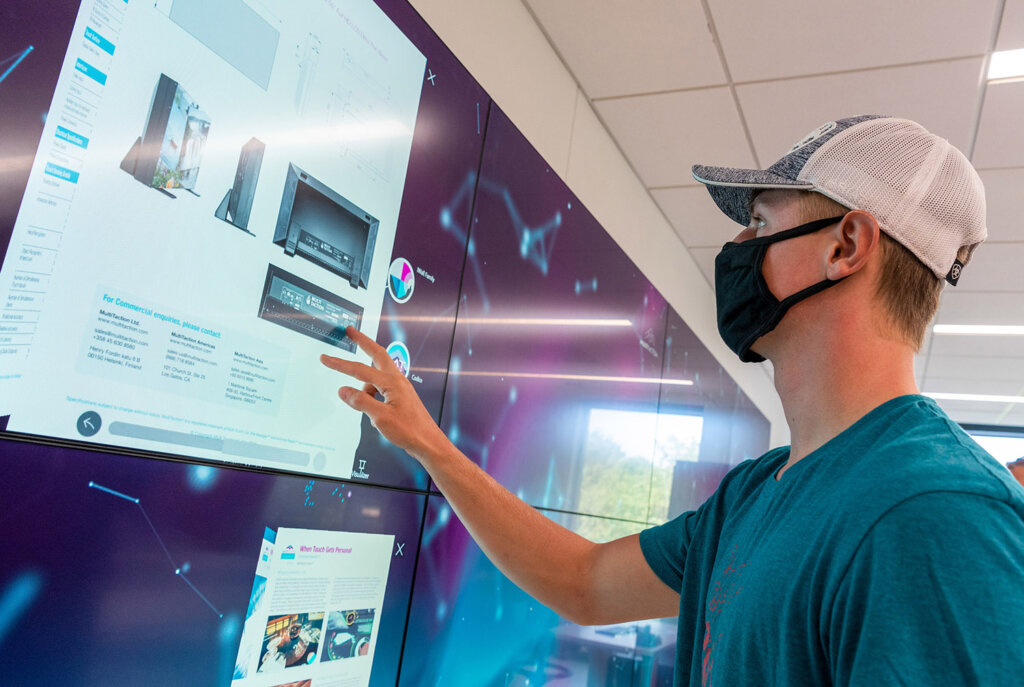
By TYLER ELLYSON
UNK Communications
KEARNEY – The ransomware attacks against Colonial Pipeline Co. and JBS are the latest on a long list of high-profile cybercrimes targeting businesses in the U.S.
This time, the mysterious criminals managed to temporarily shut down the nation’s largest fuel pipeline and threaten the country’s meat supply, forcing the companies to pay a combined $15.4 million before they could resume normal operations.
These attacks, where criminals take an organization’s data or computer system hostage, are a growing national security concern. As technology advances, so too does the risk to individuals, businesses, school systems, hospitals, infrastructure and governments.

Jacques Bou Abdo, an assistant professor in the University of Nebraska at Kearney’s Department of Cyber Systems, called the most recent incidents “the tip of the iceberg,” noting that most cyberattacks aren’t reported publicly.
“We are now waking up to how real this threat is,” he said.
To stay ahead of hackers and organized crime groups, businesses, organizations and government agencies of all sizes are looking to beef up their digital security and recruit highly trained professionals who can help protect their assets.
That’s led to a huge demand for cybersecurity talent.
“The demand is very, very high, and it’s going to continue to grow in a very exponential way because of what we’re seeing,” said UNK professor Liaquat Hossain, who chairs the department of cyber systems.

Currently, there’s a severe shortage of cybersecurity professionals both nationally and globally. A 2020 survey by (ISC)², a nonprofit organization that specializes in cybersecurity training and certification, puts the number of unfilled positions at 359,000 in the U.S. and 3.1 million worldwide.
The U.S. Bureau of Labor Statistics projects a 31% growth rate for information security analysts from 2019-29, far exceeding the national average for all occupations.
Because of the fierce competition for qualified candidates, these employees are among the highest-paid workers in the computer science field, earning a median salary of $103,590 per year, according to the Bureau of Labor Statistics.
Recent graduates can expect an annual income of $65,000 to $80,000 in Nebraska, according to Hossain, who’s part of a group focused on expanding the state’s tech workforce.
As a member of the Nebraska Tech Collaborative, Hossain works with employers and higher education partners to identify and close gaps in the labor market and build a sustainable talent pipeline in the state.
“Right now, there’s a weakness in that pipeline, and we’re trying to address that by forming partnerships with schools and developing collaborative learning,” he said.
Hossain and UNK College of Business and Technology Dean Tim Jares have been meeting with officials from K-12 schools to discuss new ways to promote STEM education and increase the number of high school graduates interested in cybersecurity and other computer science fields.
The university already hosts a weeklong summer camp for middle schoolers who want to learn more about technology and cybersecurity, as well as CoderDojo events that allow youths to explore computer programming, website development, app and game design and other areas. Another potential collaboration would use UNK’s facilities and faculty to connect with K-12 schools that don’t have designated STEM or computer science teachers.

Responding to the growing need for graduates, UNK launched its bachelor’s degree in cybersecurity operations in fall 2018. Based on the Center of Academic Excellence in Cyber Defense Education, a designation from the National Security Agency and Department of Homeland Security, the program provides hands-on training that prepares students for a variety of cybersecurity positions, from national security, military and law enforcement to health care, finance and infrastructure.
The cybersecurity program and department of cyber systems are located in Discovery Hall, a state-of-the-art STEM building that opened in fall 2020. Faculty are currently designing a new interactive lab that exposes students to different cybersecurity scenarios.
Bou Abdo wants UNK students to become strategic thinkers who “see the bigger picture.”
“That’s the quality of people we are hoping to graduate, and that’s the quality of people companies are looking for,” he said.
In addition to growing the workforce, Hossain is also interested in partnering with private businesses to develop cybersecurity training and certificate programs for current employees.
“This has to be a joint effort,” he said. “There have to be private-public partnerships and community-based partnerships to solve this issue.”